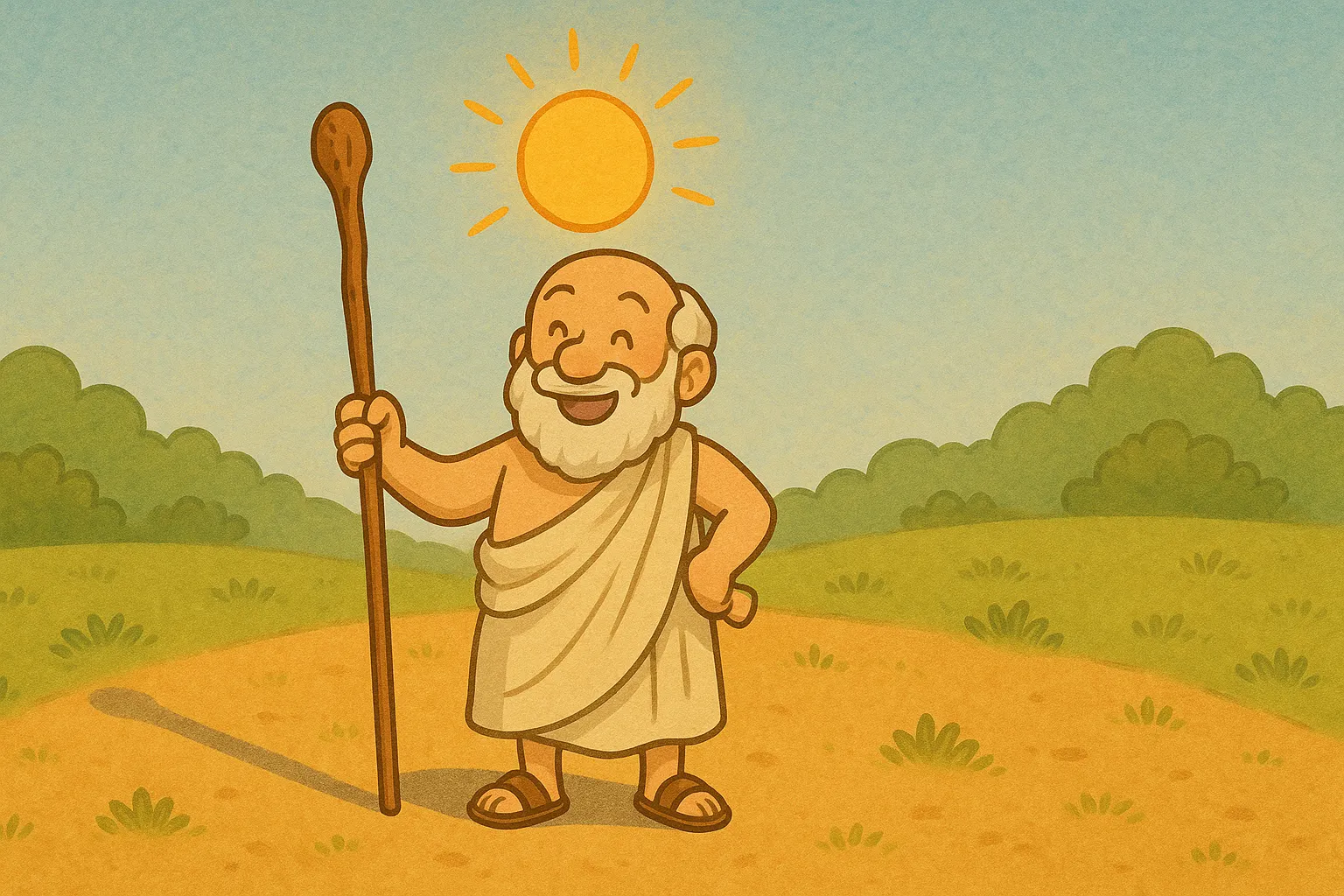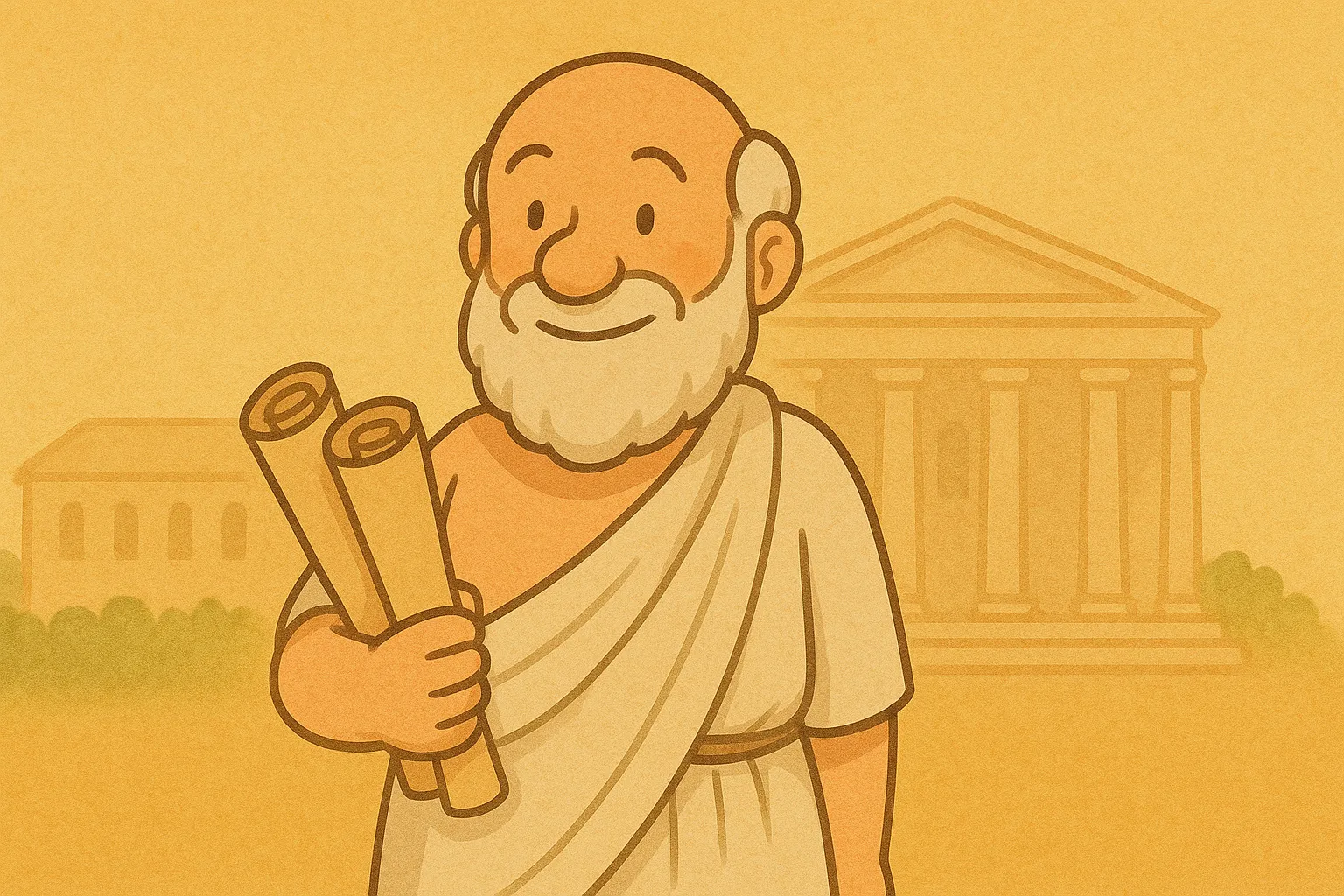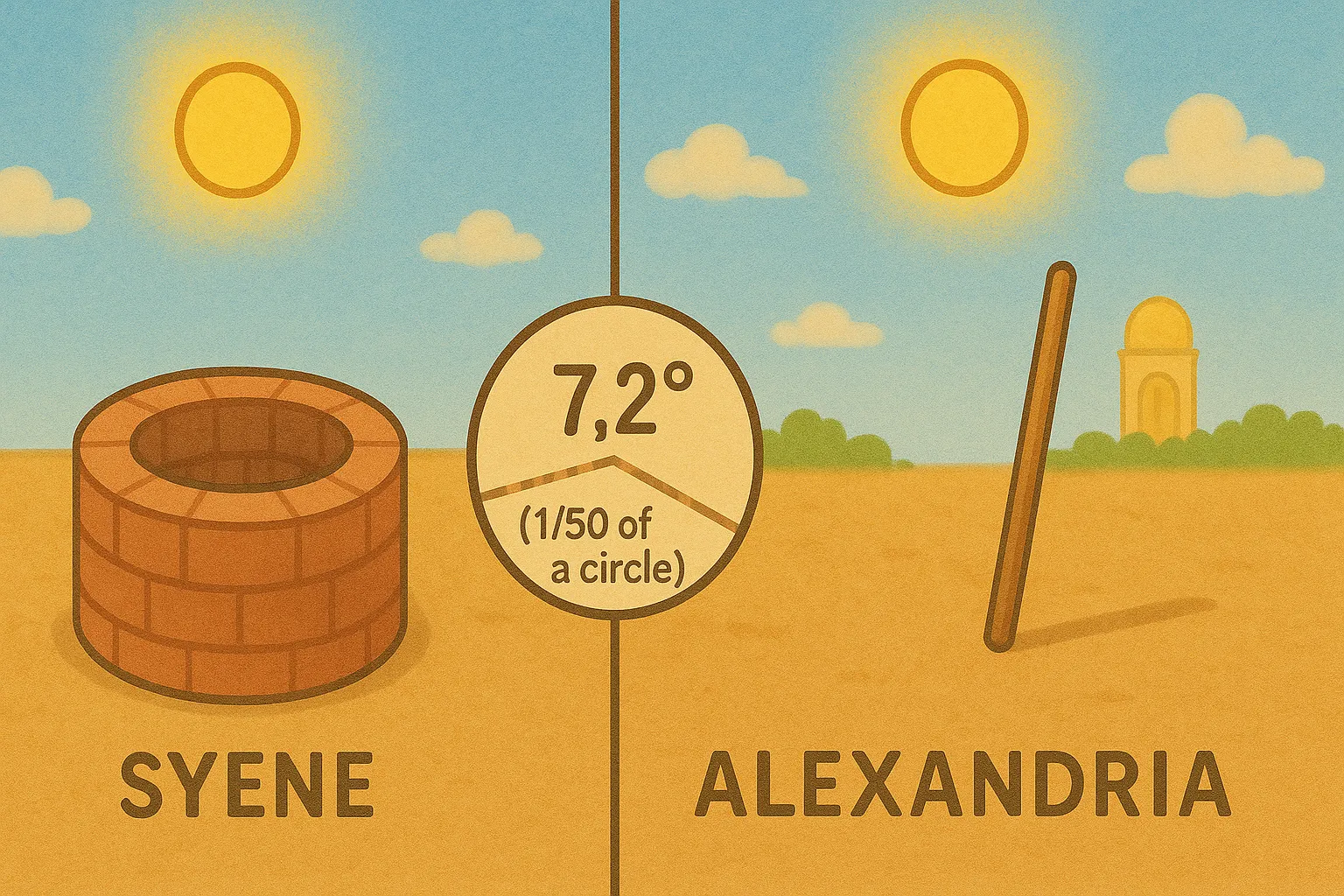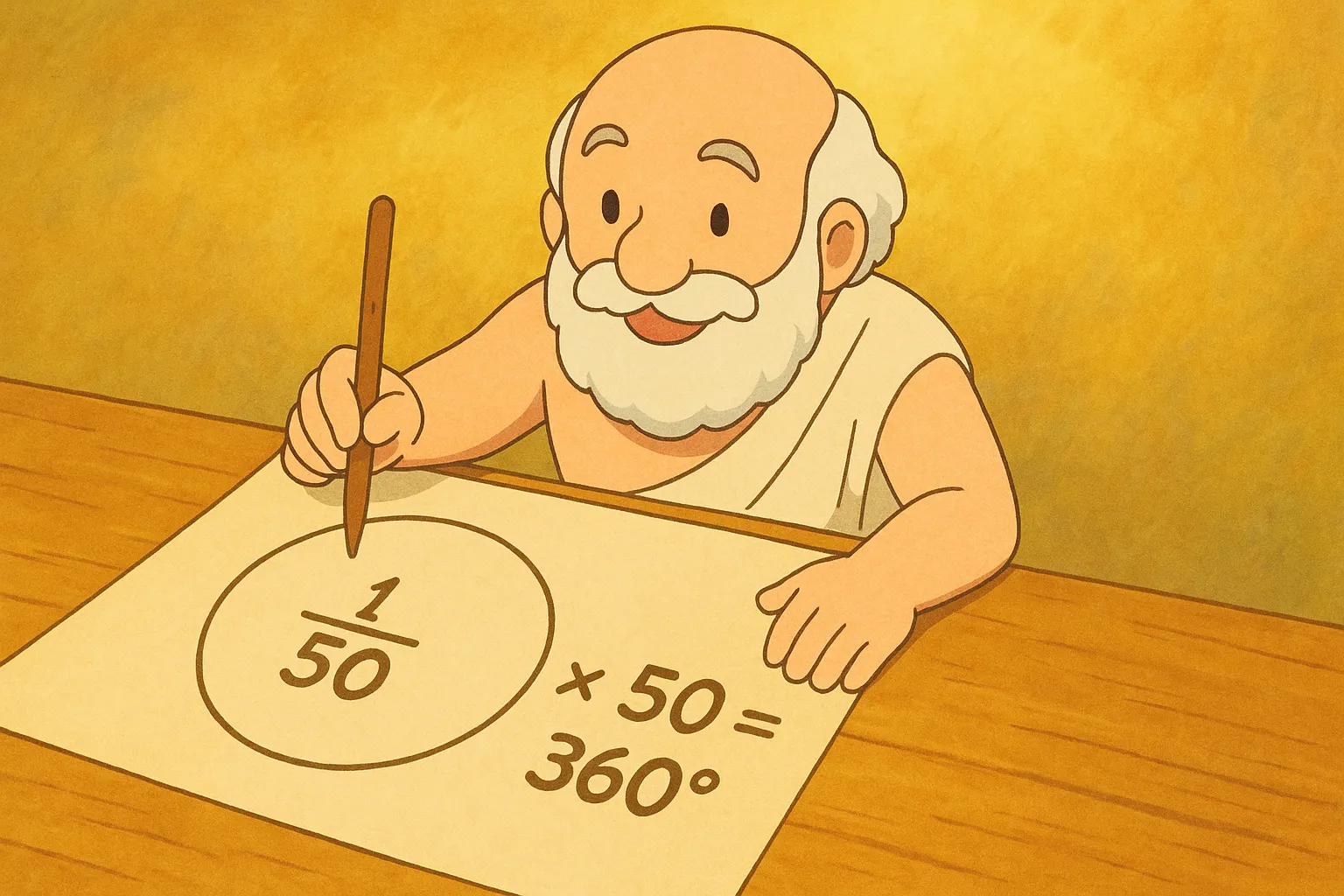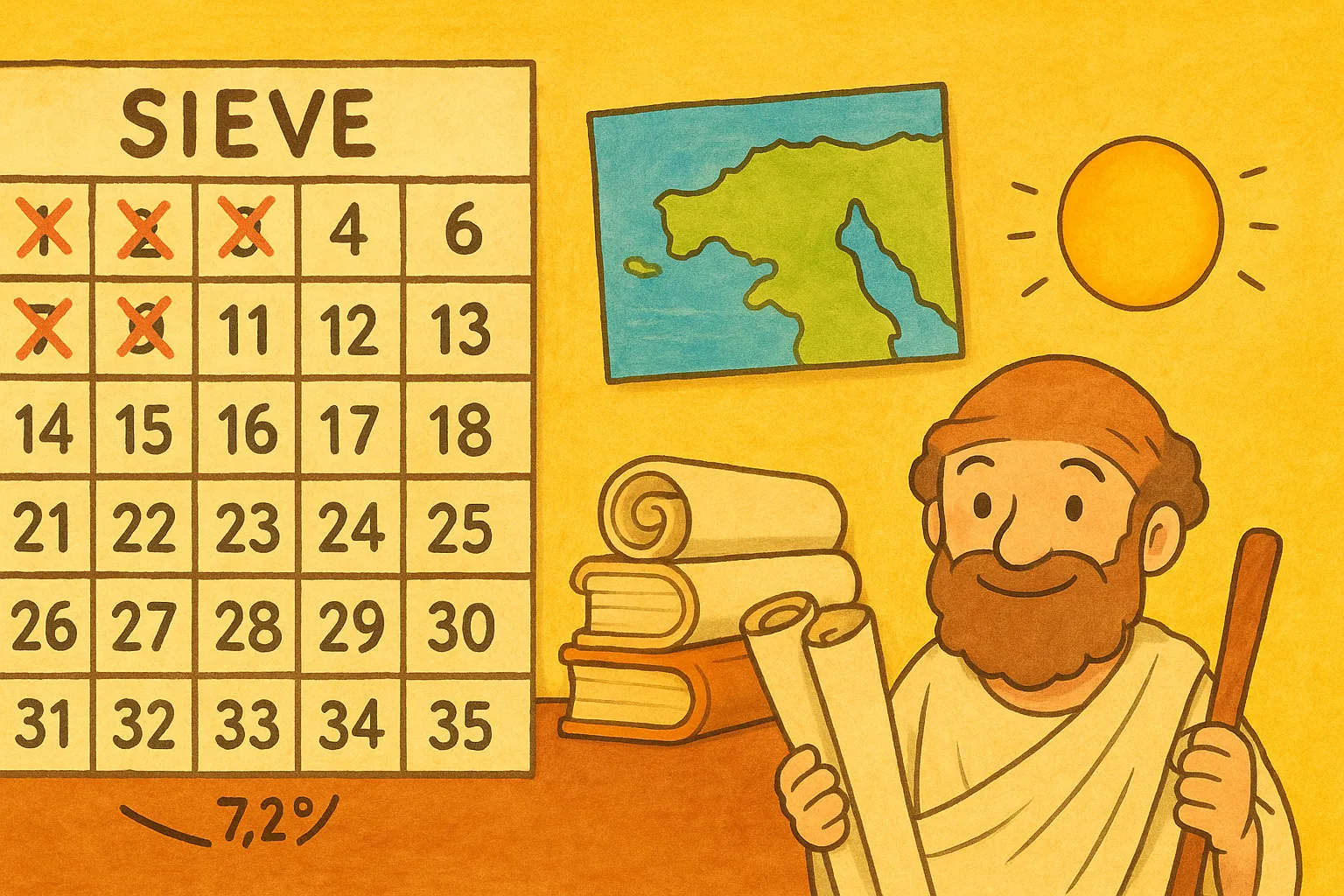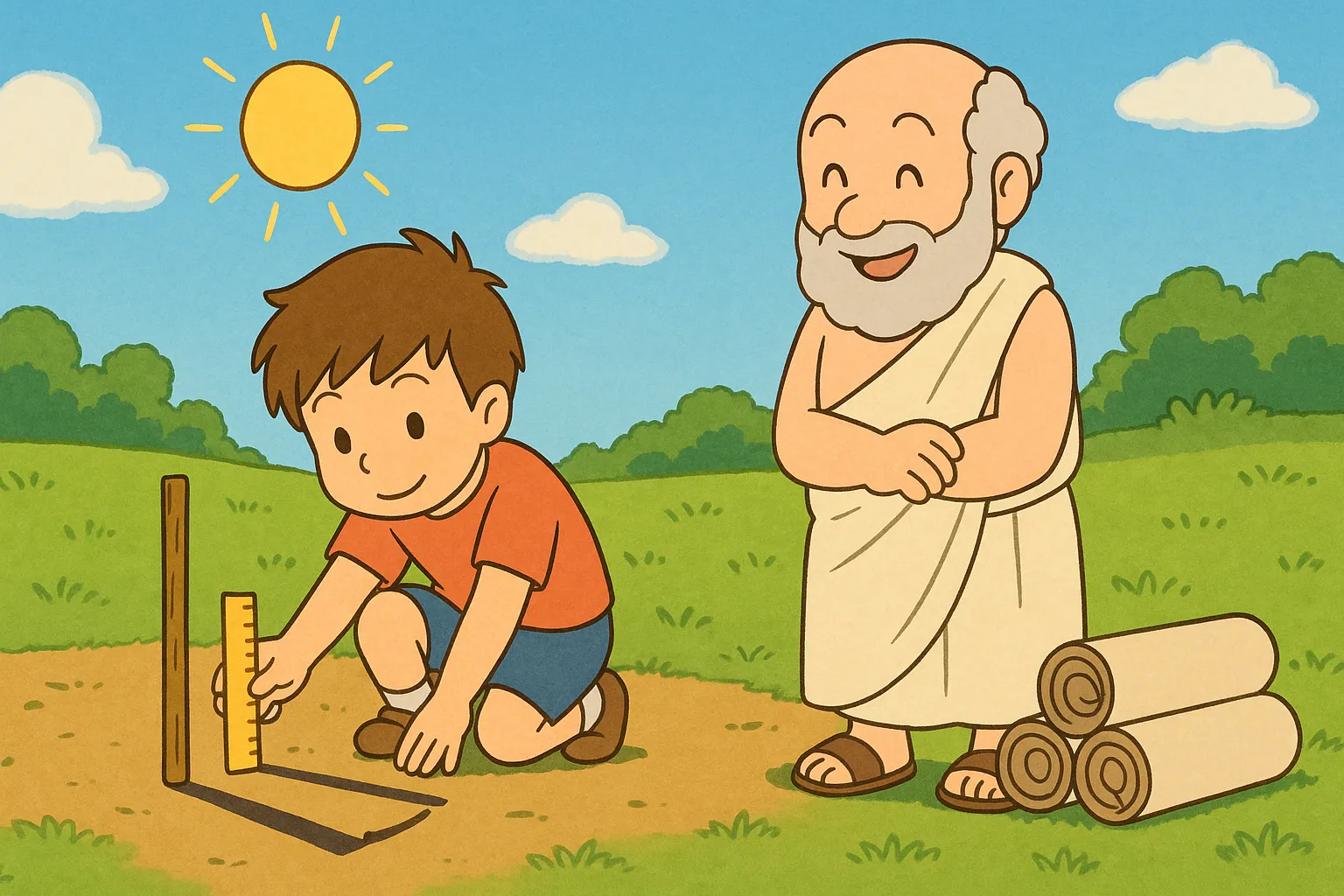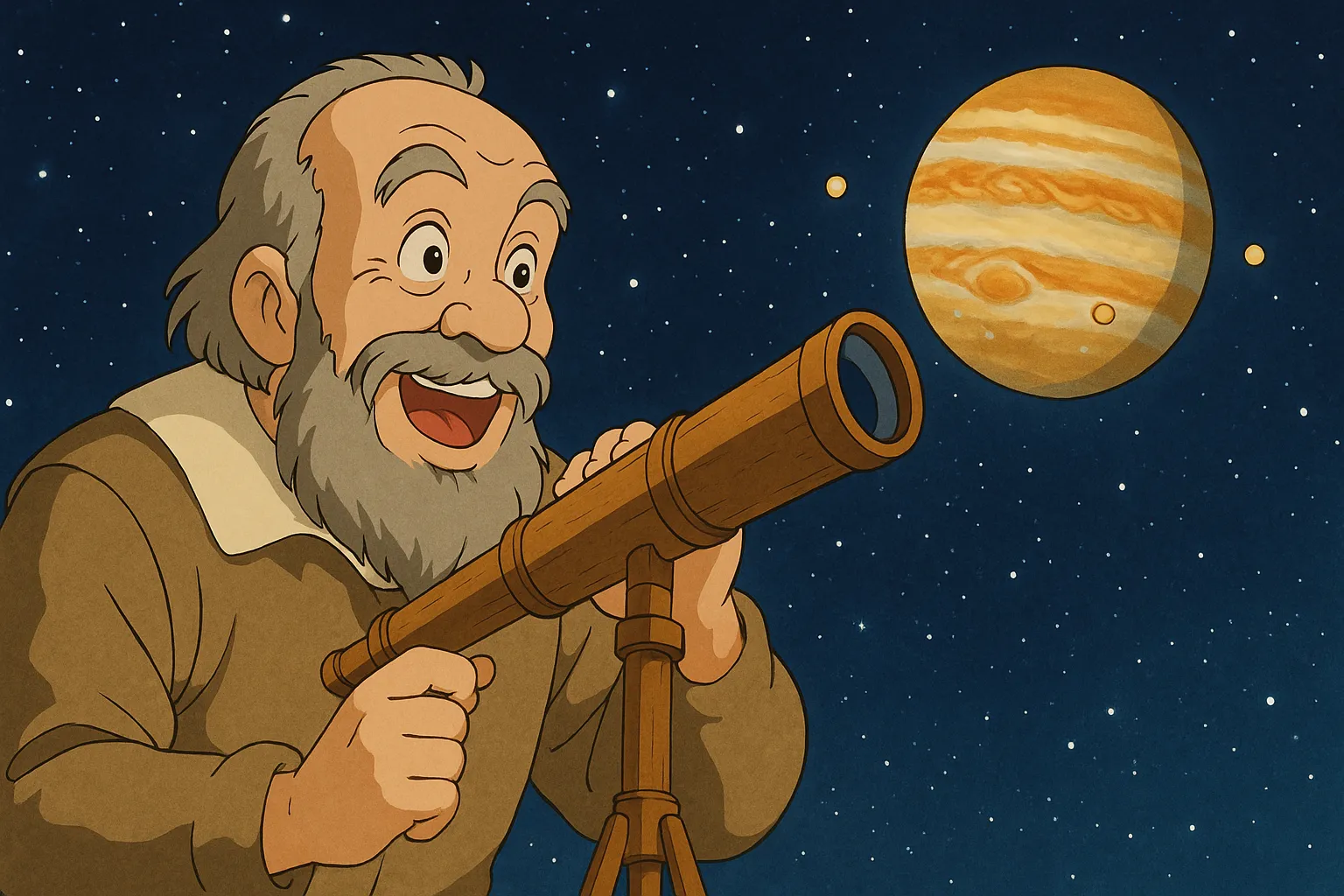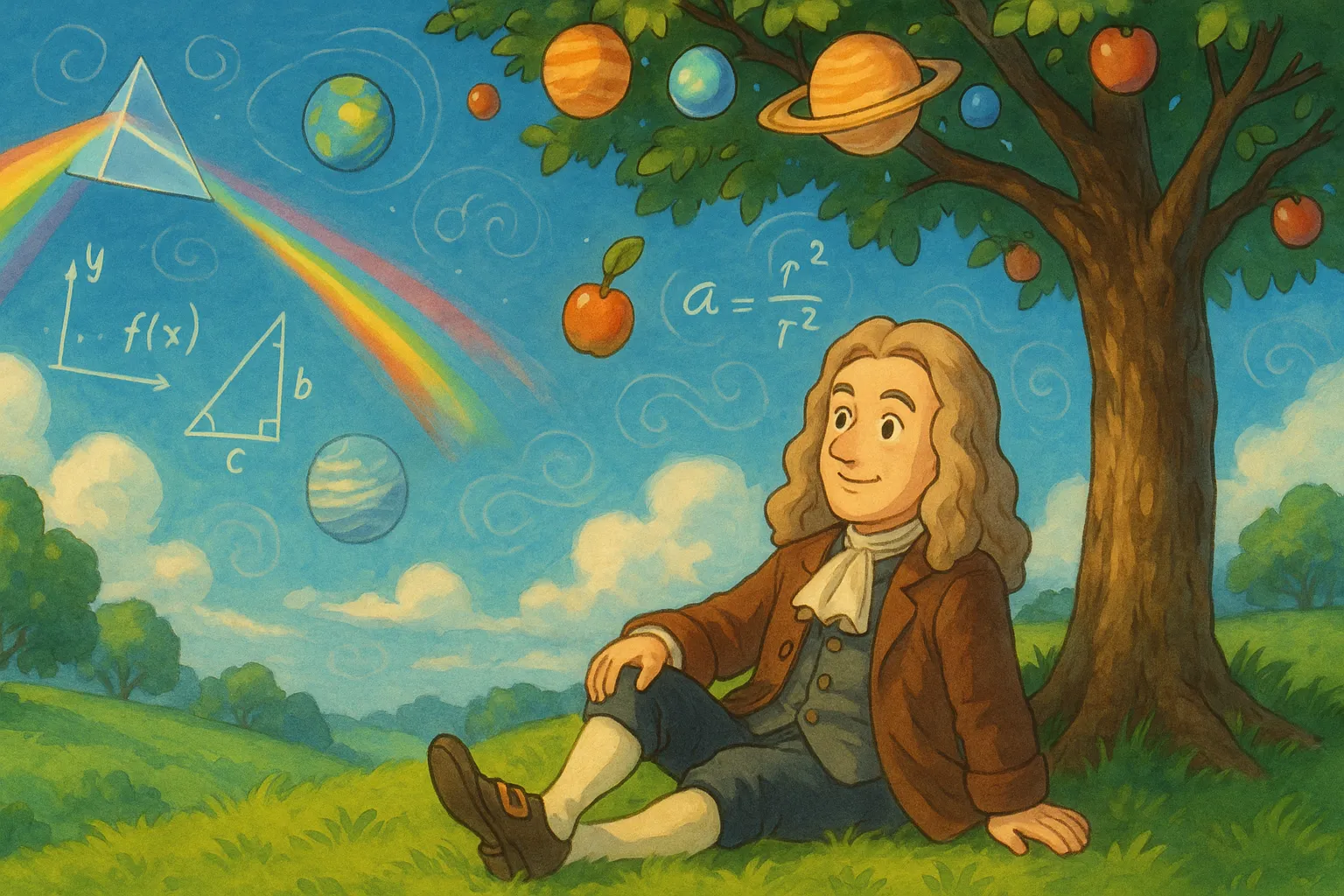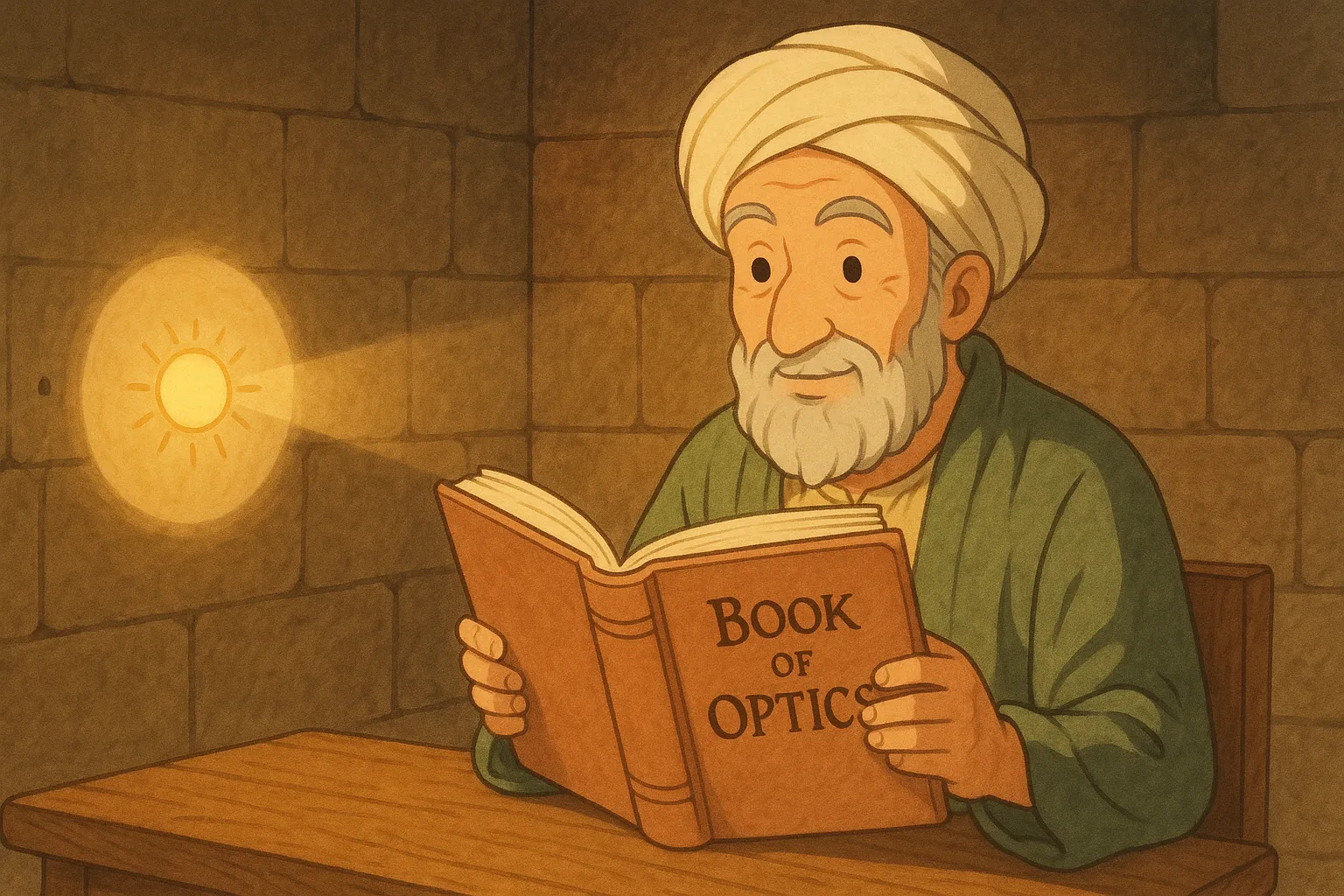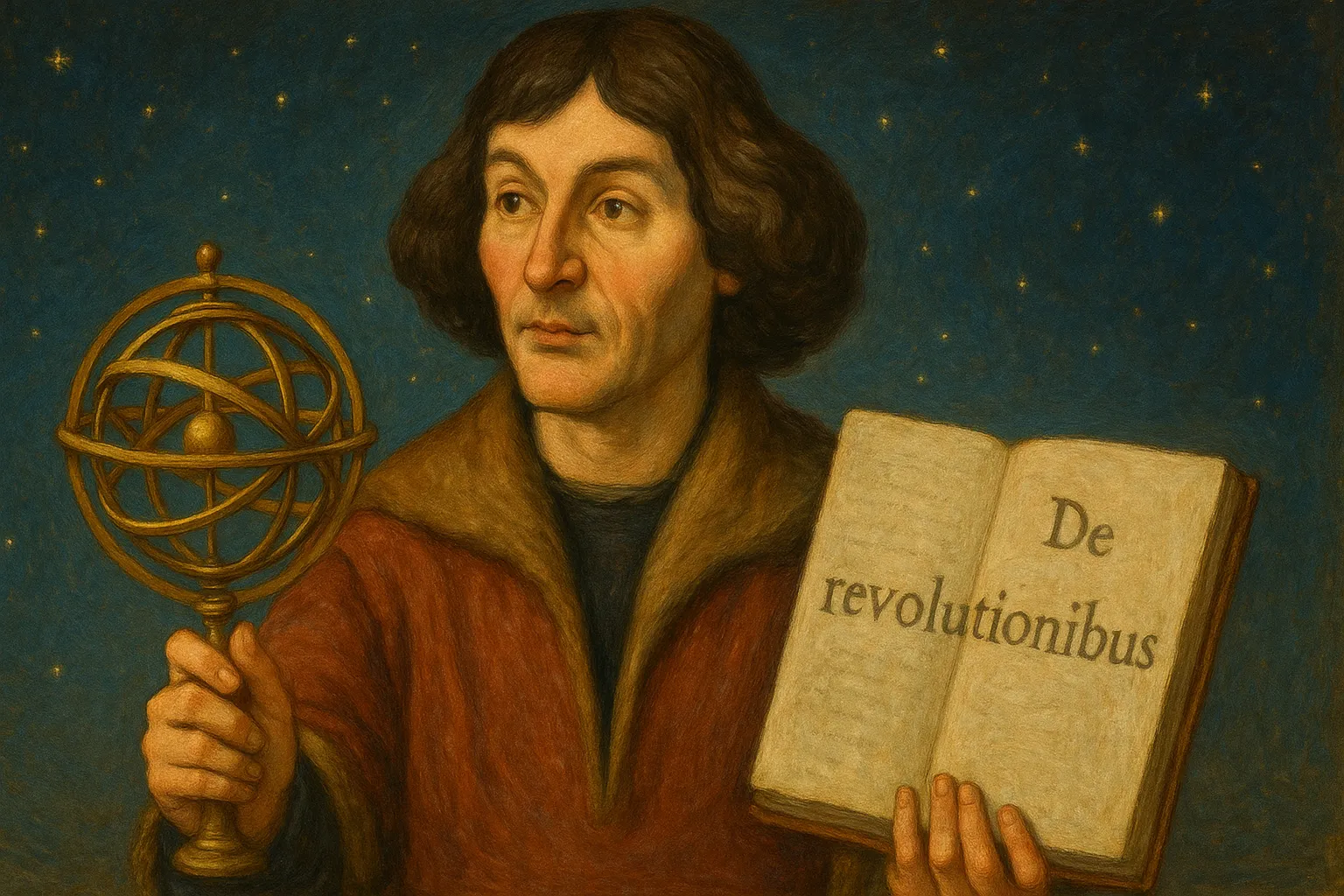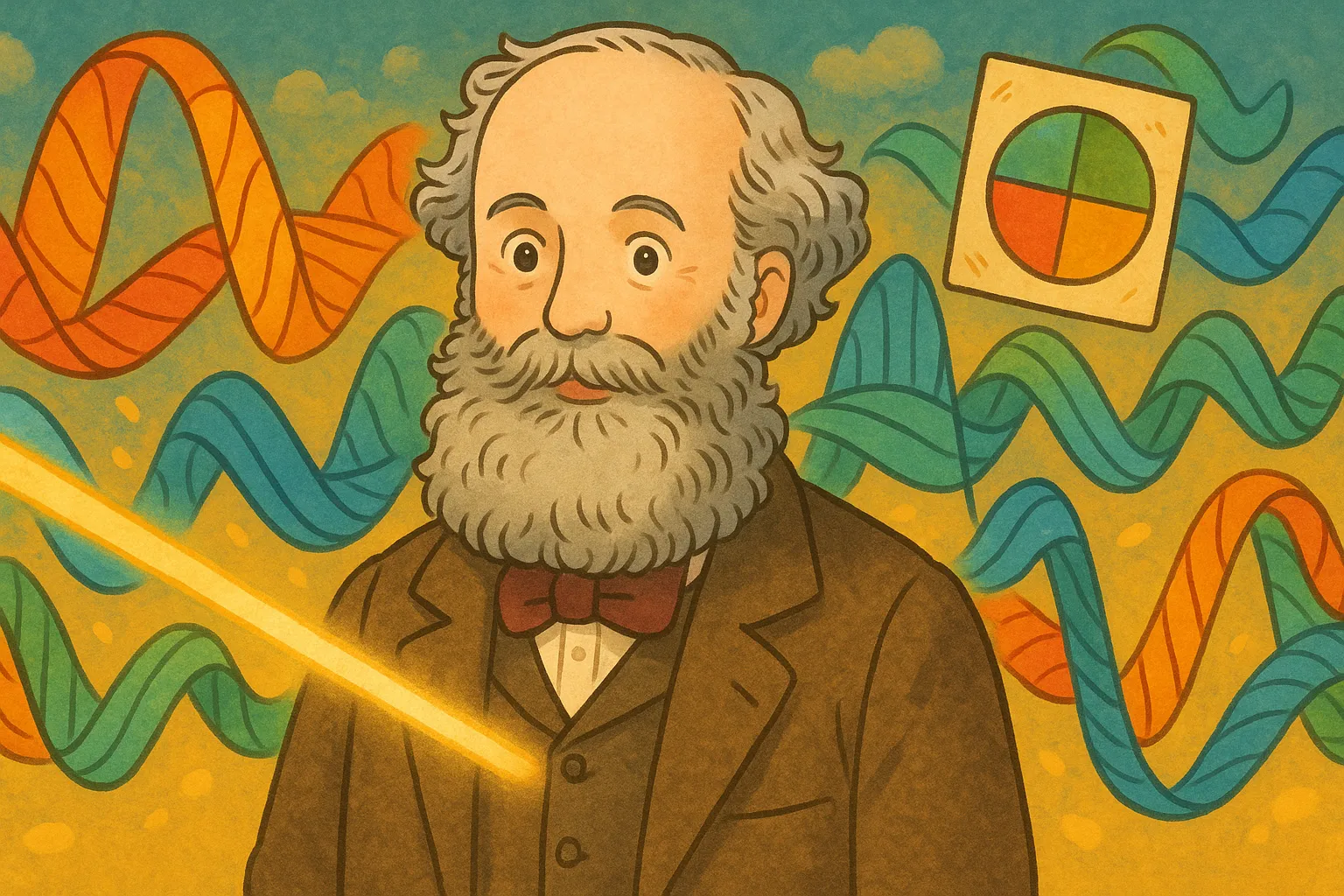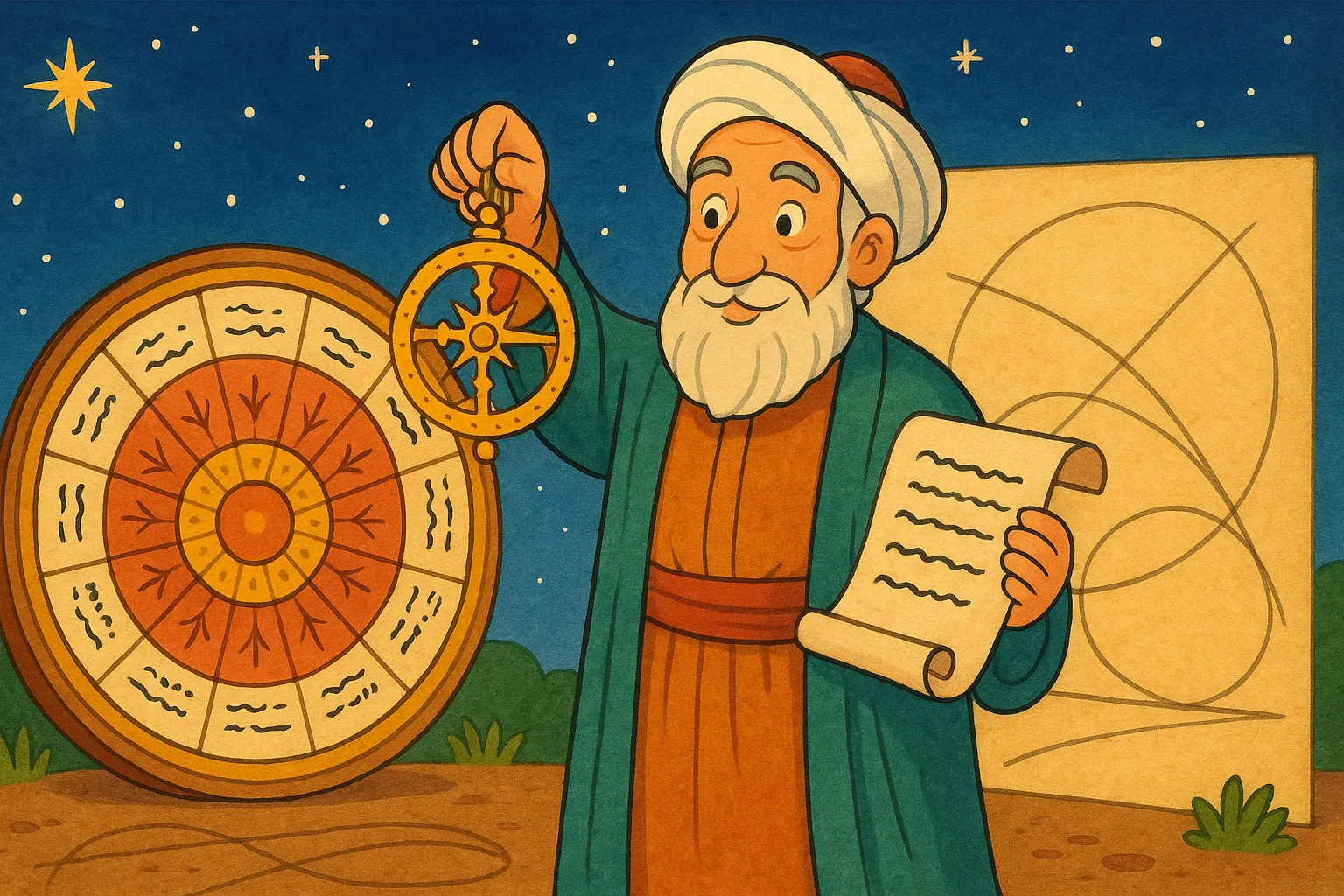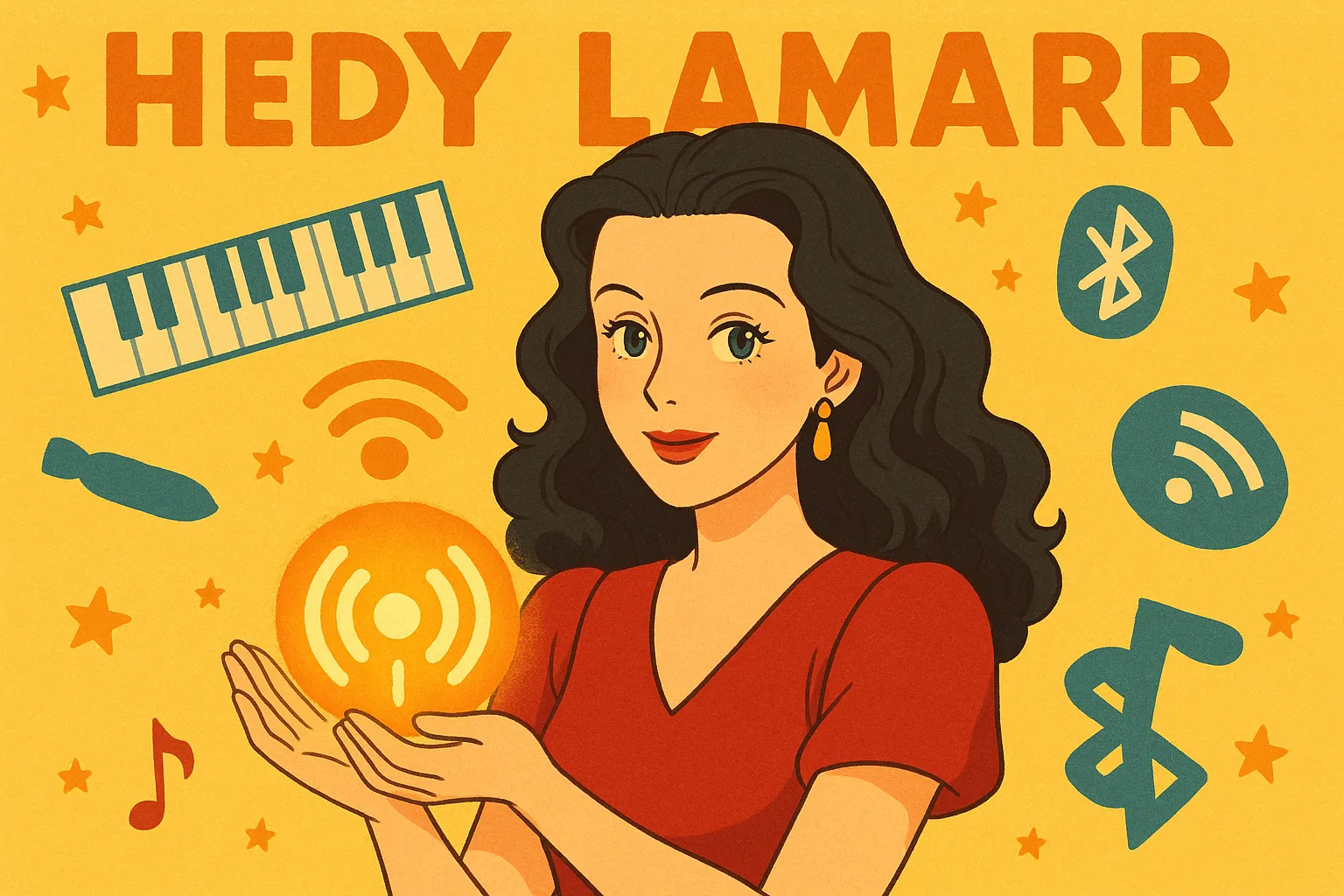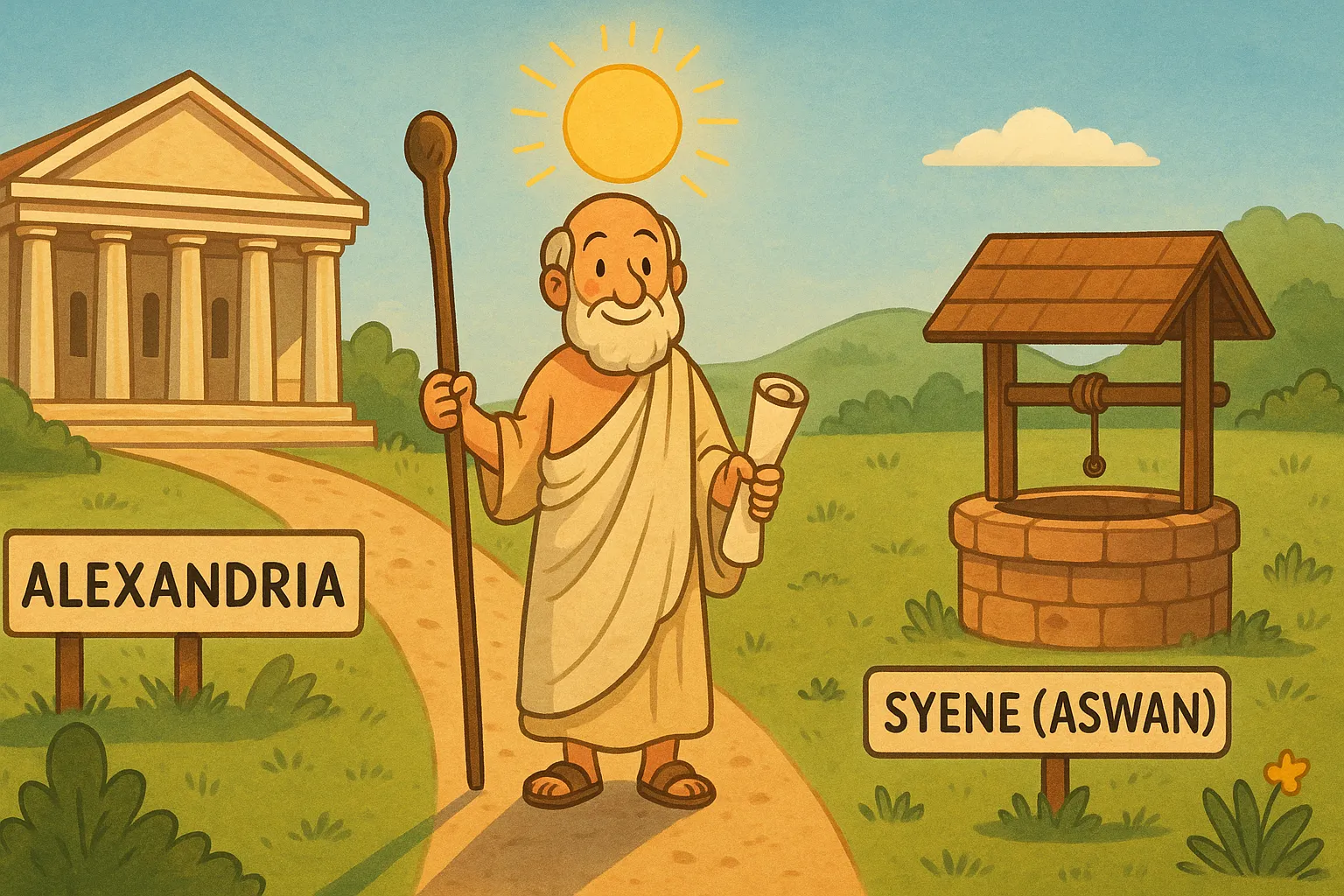
Eratosthenes

c. 276 BC - c. 194 BC
Measured Earth's size with shadows
Veröffentlicht: October 1, 2025
Häufig gestellte Fragen
Where was Eratosthenes born?
He was born in Cyrene, a Greek city in what is now eastern Libya, around 276 BC.
Do any of his original books survive?
No complete works survive. We know his ideas from fragments and later writers who quoted or described his work.
How do historians know about his Earth measurement?
Ancient writers like Strabo, Pliny, and Cleomedes recorded his method and results; historians use these accounts to reconstruct his experiment.
